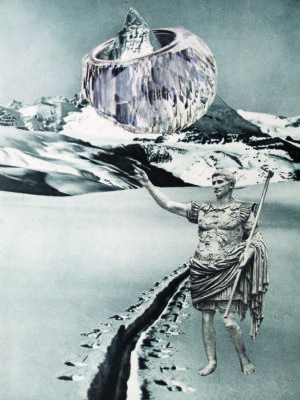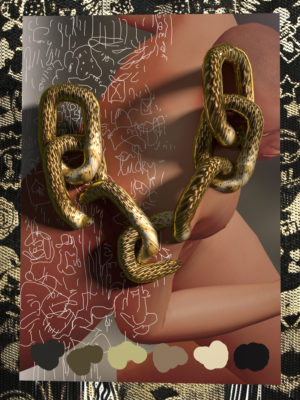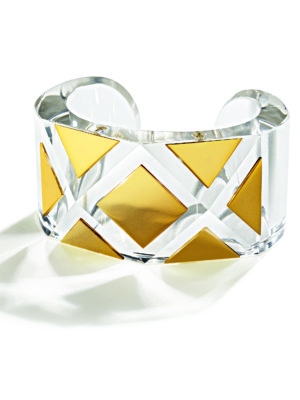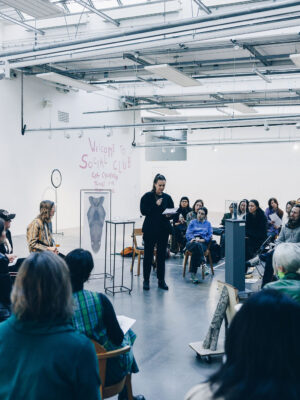We’ve selected two stories, two teachers, at two well-known European schools, who represent a certain attitude towards teaching their craft. It is about the idea of a mastership. Just like everyone, they once started from scratch, but have since received an endless training of only the best tutors before them. They can safely call themselves masters, because while they used to be students themselves, now it’s up to them to pass on the knowledge they’ve received. But somehow it is hard to believe in this linear transmission of knowledge. Mastership is not about how many books you’ve read or how many years you’ve spent practicing. It is about the understanding of what it means to teach or to be taught. The two people we’ve interviewed for this text are Carles Codina and Giovanni Martinelli, the technical teachers in the workshops of the Escola Massana (Barcelona) and Alchimia Contemporary Jewellery School (Florence). We wanted to hear them speak about their life and experience before and beyond being ‘just another’ teacher, which is what many people mistake them to be.
___STEADY_PAYWALL___
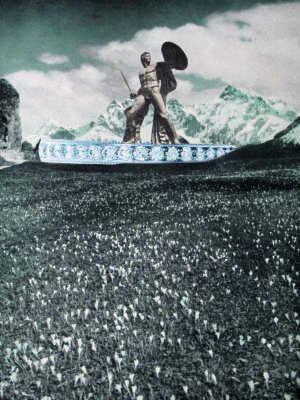
It’s All About The Job
We asked ourselves: how did they end up being teachers after all they have accomplished in their careers? Heading from solo shows to retrospectives, by now their teaching job is considered their main profession, even though their historical merit comes from the individual talents they have. Like us, they started off by getting extensive training to become the best in the field. But even after reaching their acclaimed positions they seem never too old to learn and do so naturally. They show their humility by emphasizing that they worked for even greater masters than themselves and this attitude makes them appear as endless students. It gives them pride in passing on their skill to the young, the ignorant and the hopeful. We asked Carles Codina to talk about his experience as a professor. Codina is known around the globe for his instructional books on techniques of jewellery making. They are beautifully illustrated and contain meticulous technical explanations. Both students and professionals keep using Goldsmithing and Silver Work and The New Jewellery as reference books on the acquired techniques behind traditional and contemporary jewellery.
“My evolution as a professional has progressed in many different directions. There was clearly a time when I decided to think in another way and do something different as a teacher and as a professional; this happened specifically in late 1995. There were many coinciding factors that year; one of them was a proposal for something that seemed rather mad than feasible: the making of a jewellery book based on premises that did not interest me at all. After a year of intense work my first book The Complete Book of Jewellery Making appeared on the market and became a bestseller worldwide. I was never aware of it; all I wanted was to be thorough with my own memory. The hardest part of writing craft books is to determine whether your knowledge and skills are indeed true and if your memories are certain, because in front of you lies the responsibility of writing, which is as a important as your responsibility as a teacher”.
With this attitude Codina shows that he has stepped into the role of the master-teacher. Technical teachers inspire others to keep the profession pure and to maintain the historical relevance of a certain school. Their problem-solving, solution- making nature in the workshop gives students a place to turn to; an almost hidden place, one that is not meant to be on the public display, one that is different from the classroom, tutors and challenging guest teachers, who seem to struggle to maintain their own identities, consistency and are concerned with the external outlook of the institute. Codina talks about the notion of ‘perfection’. A notion we’re hardly familiar with. We can only embrace it as an abstract idea. It appears valid only when the idea is not forced onto someone or something but genuinely attained; or perhaps when someone’s lifelong position has been to look up to the infallible mastery of a tutor or predecessor. Seen from the perspective of Codina, it seems related to ones responsibility to their work.
“I have always shown a certain dualism as a teacher and as a professional. When facing a technical challenge I have always sought for perfection; perfection not so much of the object, more as the need to conduct the process in an appropriate manner and with the utmost strictness. What bothers me most is when people do things without due care, with apathy or leave them half done, the ‘anything goes’ or ‘that’s enough’ bothers me and even blocks me.”
In this sense Codina embodies the classical archetype of a teacher being always a little disappointed with the efforts of his students, maybe even his own; an attitude by which he wants to inspire them to improve and seek their own standards and persuasions.
“I believe our schools are not providing the adequate education that students need. Sometimes I think that the problem of art schools is that we have done it too well and this has led us to stray towards failure.”
I believe Codina is more hopeful than it seems as he aims to prepare his students for success. While this is a potentially threatening as much as it is a rewarding notion, it is also something very important to think about while still being a student. Teachers hope to prepare you for the time when they are not around anymore. When the students have to set their own standards, find their own tools and make their own promises.
“We have formed groups: those capable of transmitting conceptual values, with analytical capacity, capable of ‘doubting’ their own work and the social values of their environment; groups formed by reflection and experimentation that ultimately have become new craftsmen and are working with new materials and technologies; groups of creatives that are currently caught between their local identity and the global reality, a group of students well prepared in this regard, but who do not have a clear way out of their own situation and have confusing ideas of future prospects and directions.”
Show Your Wound
Arriving to school in an immaculate car, best described as stepping right out of a magazine ad, Giovanni Martinelli is the striking mix of youthful flair and ‘old-school’ impeccability. It’s not vanity or stardom, but he definitely makes an impression. After a long and exciting career of his own, he was asked by school founders Doris Maninger and Lucia Massei to become the head technical teacher at Alchimia – a young school for contemporary jewellery in Florence. Lucia once worked for Giovanni as a designer at his atelier and when she and Doris decided to start their own school years later in 1998, it was the perfect opportunity to return to him.
“At the beginning I was a bit suspicious about contemporary jewellery. I remember Manuel Vilhena (PT, 1967 Jewellery artist, senior lecturer at Alchimia for six years ending in 2006) telling a story about a project. He made a ring, ate it and then… I could not believe it and have difficulties believing it even today. But for a lot of other reasons I have to say that I am curious about it and sometimes even like admire it. I like when things are unique and done with real love and intention.”
If there is anything Giovanni inspires, it is a sense of wonder and amazement.
“I was born in 1943, a very bad year in a very matriarchal family. My grandmother used to decide everything and her decision was that only the girls, I have 3 sisters, could study. The boys had to go to work after elementary school. I would have liked to study but I had no chance. My uncle traded silver and I was always interested in the objects he used to carry with him. So he found me an apprenticeship with a goldsmith in Florence. I was very lucky because my master Cini knew how to make practically everything. The first months I was only allowed to watch. We worked only in gold, but very low alloys; the workshop had a small-scale production and was doing a lot of castings for Florentine wholesalers. I stayed there for 4 years and then I moved on – I wanted to do more important things and was taken on as an apprentice by Batacchi. He was a very famous jeweller, in my opinion the best in Florence. We made jewels on a commission basis for important people in Florence (aristocrats from Italy, England). It often took us 2–4 months to finish a piece and the years I worked there were the most exciting of my life. I got to see some of the most wonderful jewellery in the world, really important pieces with incredible stones. I remember a diadem with diamonds and emeralds – we had to take it apart and modify it so it could be worn as a diadem while the single parts could also function as brooches. Batacchi was incredibly demanding. I had to remake pieces endlessly until he was satisfied.”
Was he always right when you had to repeat a piece?
“Yes absolutely, I often did not see the fault – but when he showed and explained it to me he was always right. I was a good apprentice though and after a while I would execute really important work. I remember especially a bracelet, platinum with incredible emeralds (the butler brought it, we never saw the owner) where a whole element was missing. We had to redo it and the stones alone where worth millions of Lira. I did it while he (Batacchi) was standing behind me to watch my every move – I knew he had me do it because his eyesight was not good enough anymore and my hands were more secure. He appreciated me because I had a sense for proportion and measure.”
What did this painstaking way of learning teach you?
“To work with a system. To fabricate an object right you need to follow a system – you need to have an exact plan when to do what – and this is what I try to teach my students now.”
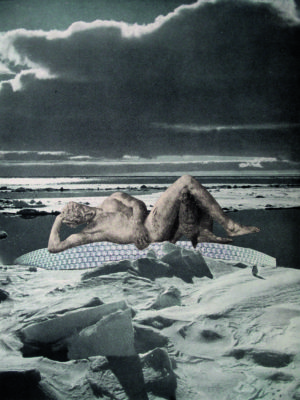
While its not hard to identify with his personality, it’s not quite as easy to get Giovanni to reveal his craftsmanship early in the game. Students at Alchimia get to spend a lot of time in the workshops. Three days a week for three hours, 3rd year students can ask him anything they want to know about metals, alloys or soldering techniques. He is there to find simple solutions for their ideas. But unlocking his true skill often takes more time than people spend studying. It takes a true challenge to get a teacher like Giovanni to really show the passion that he’s been carrying for so long. It has nothing to do with the pride of a master himself. It is about those who are willing to learn and those who just want to get things done fast. Talking to people who know him we started to see the resemblance with the story of the church father, Saint Jerome and the wild lion. Jerome was an acclaimed writer and intellectual, usually shown in his study among books, which he translated into many languages. The study he depicted in transits directly into the open nature as to symbolize the knowledge being publicly available. But despite his vast knowledge and potential of being a great teacher, Jerome was known as a person very hard to come by… Up until the moment a wild lion showed up in his study. At first Jerome and even the lion were immensely scared. However, they didn’t stray away from each other, but slowly became curious. Only when Jerome showed enough bravery to come close to the lion, he saw that he suffered from a wood splinter in his paw. The lion remained still while Jerome removed the splinter. This unusual transaction brought the lion and Jerome closer. Even when we see them now, the lion and Jerome are depicted together in mutual respect and trust, although between men and animals such concepts don’t literally apply. This is how we imagine the relationship between a student and a teacher. The school that houses this relation is an open place. It is possible to dive into knowledge, but it is easy to wander off as well. In case of Giovanni, there are different levels to his teaching. Some people may only catch a glimpse, while others are truly invested. But most importantly, he doesn’t feel like he owes the students anything. It seems, a fruitful relationship between a student and a teacher can’t be institutionalized. The student, being the lion, needs to reveal his/her true interest, a reason for being there, a true cause, like the lion’s wound, that doesn’t easily identify itself.
Sticking Around
Mastership is about patience. The goal of attending classes is not just about acquiring knowledge, but also about bearing witness to a certain attitude. In case of the Lion and Jerome it’s about holding still, even though it’s in lions’ nature to become violent. With emotions varying from fright, wonder, rebellion and a sense of achievement, being a student is naturally confusing.
Carles Codina: “The entire group graduating every year from jewellery and design schools strives for a change and a different strategy in their education. I have worked extensively in Latin America with groups of all kinds. Last year I have worked in Algeria and Morocco. During one of my last lectures I understood that many of the values we have internalised in Europe are going to change because they are already exhausted. Those truths we assumed, what we learned and what we have identified with will disappear or will be questioned. The changes for these future generations are already there on the street: religious changes, social changes, etc. The new jeweller will have to bring together the global and the local; blend tradition, personal development and innovation and altogether must capture traditional values and give them a new future in a global market. I do not believe that schools at this time will live up to the expectations of our future students.”
The difference between a student and a teacher lies in the time between them. When the students finally graduate and receive their degrees they are still far away from becoming masters. What teachers can prepare you for is an inevitable change. Learning is as much about wandering off and reconditioning values as it is about sitting at the school benches. Only those students who have endurance to maintain open trough this process have the potential to become masters of their own. We believe it is a mix of excitement and pure skill combined with an extremely humble nature that makes a technical teacher so special. It is quite striking how some people can really help you to do so much more than you originally thought possible. It is interesting to see both the student and the teacher struggle to exchange their knowledge and deal with their learnings. The master’s gift remains something quite extraordinary and might be something that we, students, may never attain. Yet, it awakes the curiosity we will never loose and might someday reveal the teacher in us.
This article was first published in #2 Youth Issue, Current Obsession magazine, 2013
The issue is sold out
